Blender 3.5 has introduced several new features to its Universal Scene Description (USD) Import and Export capabilities. These updates include support for USDZ, improvements to the USD export process, and additional functionality for importing USD Shapes. In this article, we will explore these updates and the concepts behind them.
First, let's start with the basics. USD is an open-source file format developed by Pixar Animation Studios for the interchange of 3D graphics data. It is designed to be a flexible, scalable, and efficient way to represent complex scenes and assets. USD is used by many leading companies in the animation and visual effects industries and is gaining popularity in the gaming industry as well.
Blender's support for USD means that users can seamlessly import and export USD files, making it easier to collaborate with other software and studios. With the release of Blender 3.5, this functionality has been further expanded with the addition of support for USDZ, which is a compressed version of USD specifically designed for use in AR and VR applications. This means that Blender users can now easily import and export USDZ files, opening up new possibilities for AR and VR content creation.
In addition to USDZ support, Blender 3.5 has made improvements to the USD export process. Specifically, the changes have been made to pass usdchecker, which is a tool for validating USD files. By passing usdchecker, Blender is ensuring that its USD exports are compliant with the USD specification and can be used seamlessly with other software.
Another update to the USD export process is the addition of scale and bias for exported USD Preview Surface normal maps. Normal maps are an essential component of 3D graphics, as they allow for the creation of the illusion of surface detail without adding additional geometry. With this new feature, Blender users can now control the scale and bias of the normal maps, giving them greater flexibility in their workflow.
Another improvement made to the USD export process is the conversion of USD camera properties to millimeters from USD units. This change ensures that cameras in Blender and other software using USD are consistent and accurate, which is especially important when collaborating on complex scenes.
Finally, Blender 3.5 has added support for importing USD Shapes. USD Shapes are a way to represent geometric shapes such as spheres, cylinders, and cones in USD. With this new feature, Blender users can easily import USD Shapes and use them in their scenes.
In conclusion, the new features added to Blender 3.5's USD Import and Export capabilities are significant updates that further enhance Blender's already robust support for USD. With support for USDZ, improvements to the USD export process, and additional functionality for importing USD Shapes, Blender users can now more easily collaborate with other software and studios, opening up new possibilities for 3D graphics and animation.



